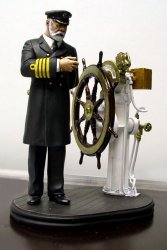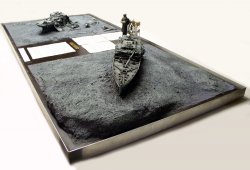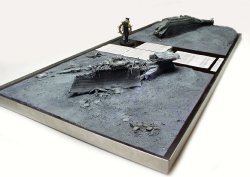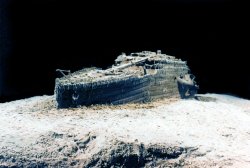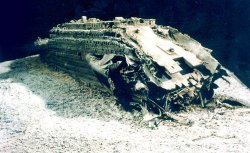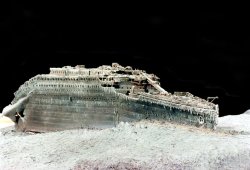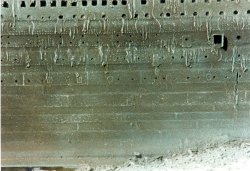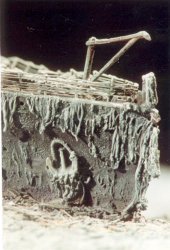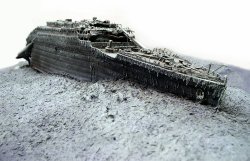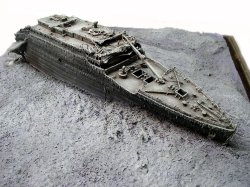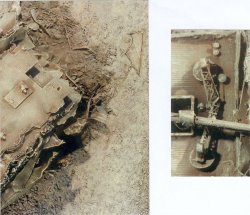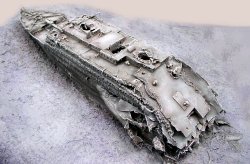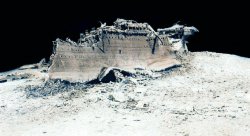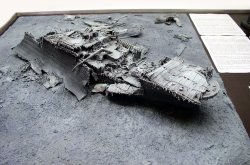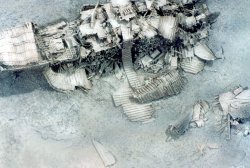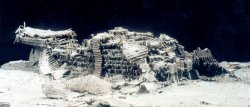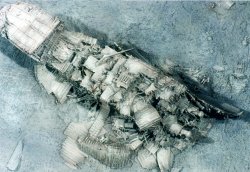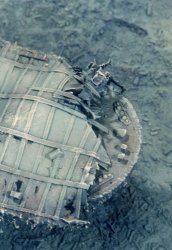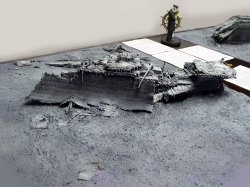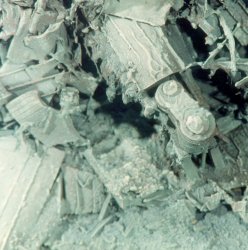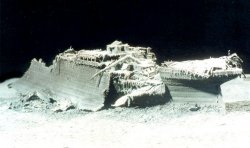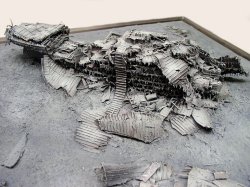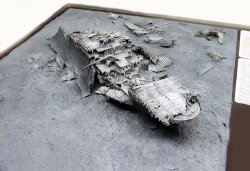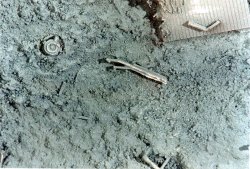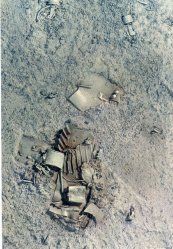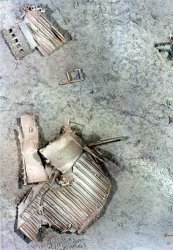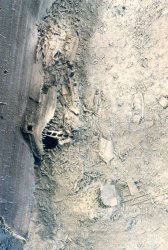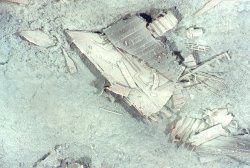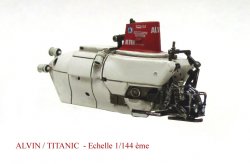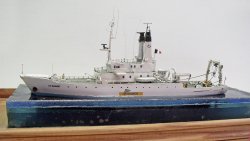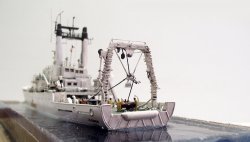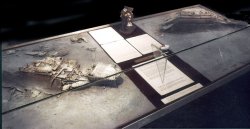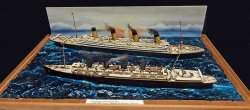
Galerie * Gallery - LE TITANIC
"April 1912." "Who sank it ? Little Annick ?!"
Tout le monde connaît le Titanic...
"Ship in sight !""
LA PROUE
LA POUPE
La maquette utilisée pour réaliser l'épave est celle d'ACADEMY à l'échelle 1/350ème. Le paradoxe avec ce genre de sujet c'est que plus on veut montrer la destruction, plus il faut construire!
Le champ des débris, très important autour de la poupe...
Everyone knows the Titanic...
The most famous of shipwrecks, amplified by James CAMERON's movie production - excellent at re-enactment - and the media, and the pursuit of the wreck's "treasures" by expeditions following the discovery for more or less self-confessed commercial purposes...
Let me briefly summarize the story...
April 1912. The Titanic, the largest and most sophisticated ocean liner of her time, sails from the White Star dock in Southampton to Cherbourg via Queenstown in Ireland, on her maiden voyage across the North Atlantic to New York. Some 2,207 passengers were on board...
The Titanic had covered 1,376 kilometers when the two radio operators received the first warnings of ice fields. Commander Smith - belatedly changes course 16 kilometers further south, but keeps the same speed...
At 11:39 pm on Sunday April 14, tragedy struck: the lookout signaled "Iceberg, dead ahead! It would take the heavy ship 37 fatal seconds before she began to tack. The iceberg "grazed" the bottom of the hull, causing six impacts and blowing out all the rivets along the length of the hull, where seawater then rushed in. The first five watertight compartments filled with water, but as they did not rise to the deckhead, they communicated with each other, leading to the loss of the ship. The nearest vessel, the Carpathia, is still 93 kilometers from the wreck site. The undermanned lifeboats, even when full, could not hold all the passengers...
At around 2.10 a.m. on Monday April 15, 1912 - the expansion joint gave way and the water-filled Titanic broke in two. The bow sank first, while the stern rose vertically to a height of some 75 meters, before sinking inexorably. The survivors spotted the Carpathia's signals at around 3:30 a.m., but the last passenger was not hauled in until 8:30 a.m.. 705 people survive...
THE DISCOVERY
In 1985, American geologist Robert D. BALLARD from the Wood Hole Oceanographic Institute boarded the French oceanographic vessel LE SUROIT for a two-month campaign to locate the wreck of the Titanic. On board is French engineer Jean-Louis MICHEL, creator of a new side-scan sonar. For two months, the vessel searched the seabed without success. After its departure, the two men continued their research on the Institute's ship, the KNORR. Discouraged, they finally located the wreck at a depth of 3,798m. The bow was about 600 m from the stern, in the middle of a debris field. LE SUROIT had come very close, perhaps less than a kilometer!
THE PROW
The bow of the Titanic twisted on impact with the seabed, sinking more than 20 m at the anchors. The anchor chains are still in place, and we can still see the crow's nest (fallen off in 1985) on the mizzen mast, where the lookout shouted his famous cry: "Iceberg ahead! When the bow hit the bottom, the decks closest to the break collapsed one on top of the other...
THE STERE
The destruction of the stern is clearly visible on the starboard aft side. The decks collapsed on top of each other on impact with the bottom, exploding the hull. The high-pressure cylinders of the reversing gearbox can still be seen in the vertical position...
The model used to build the wreck is ACADEMY's 1/350th scale. The paradox with this kind of subject is that the more you want to show destruction, the more you have to build !
The large debris field around the stern...
The Alvin, the American submarine that dived on the wreck...
The LE SUROIT - French oceanographic vessel. The sonar unit can be seen on the stern, ready to be submerged...
A scene that could have happened if... The Titanic crossing the Mauretania...














